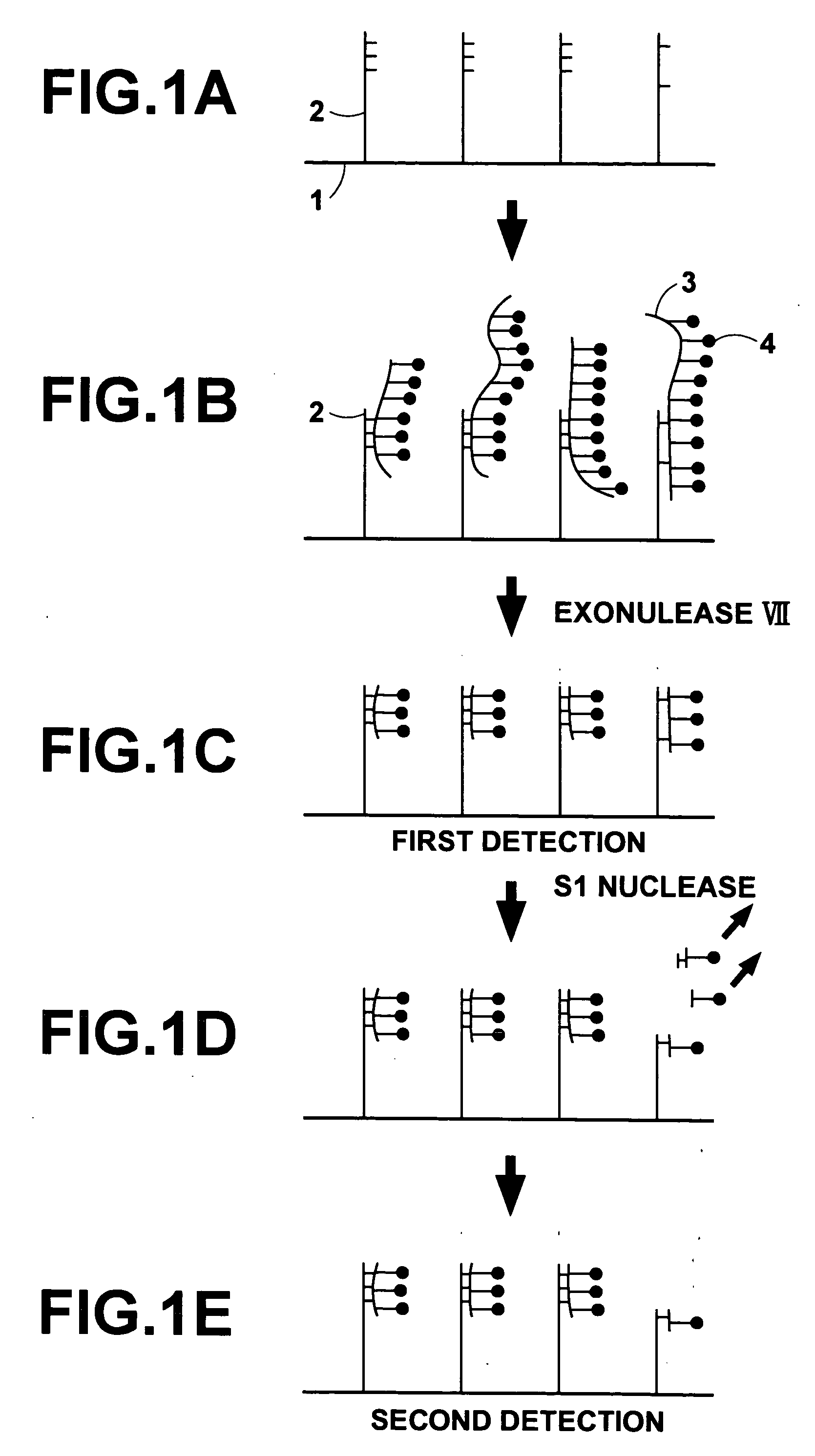Method of detecting mismatching regions
a technology of mismatching region and detection method, which is applied in the identification of library members, organic chemistry, biochemistry apparatus and processes, etc., can solve the problems of noise, adversely affecting the detection accuracy, and not always being able to perform the reaction
- Summary
- Abstract
- Description
- Claims
- Application Information
AI Technical Summary
Benefits of technology
Problems solved by technology
Method used
Image
Examples
Embodiment Construction
[0033] The present invention will hereinbelow be described in further detail with reference to the accompanying drawings.
[0034] An embodiment of the method of detecting a mismatching region in accordance with the present invention, wherein a DNA array comprising a supporting material and a plurality of oligo DNA probes having been fixed respectively to a plurality of regions on the supporting material is utilized, will be described hereinbelow. FIGS. 1A to 1E are explanatory views showing how a mismatching region is detected with an embodiment of the method of detecting a mismatching region in accordance with the present invention.
[0035] Firstly, a surface of a membrane filter 1 acting as a supporting material is processed such that carboxyl groups (COOH) or aldehyde groups (COH) are exposed from the surface of the membrane filter 1 to the exterior. Also, an amino group (NH2) is introduced into a 5′-terminal of each of synthetic oligo DNA's acting as DNA probes 2, 2, . . . Each of...
PUM
| Property | Measurement | Unit |
|---|---|---|
| temperature | aaaaa | aaaaa |
| temperature | aaaaa | aaaaa |
| chemical luminescence | aaaaa | aaaaa |
Abstract
Description
Claims
Application Information
 Login to View More
Login to View More - R&D
- Intellectual Property
- Life Sciences
- Materials
- Tech Scout
- Unparalleled Data Quality
- Higher Quality Content
- 60% Fewer Hallucinations
Browse by: Latest US Patents, China's latest patents, Technical Efficacy Thesaurus, Application Domain, Technology Topic, Popular Technical Reports.
© 2025 PatSnap. All rights reserved.Legal|Privacy policy|Modern Slavery Act Transparency Statement|Sitemap|About US| Contact US: help@patsnap.com

